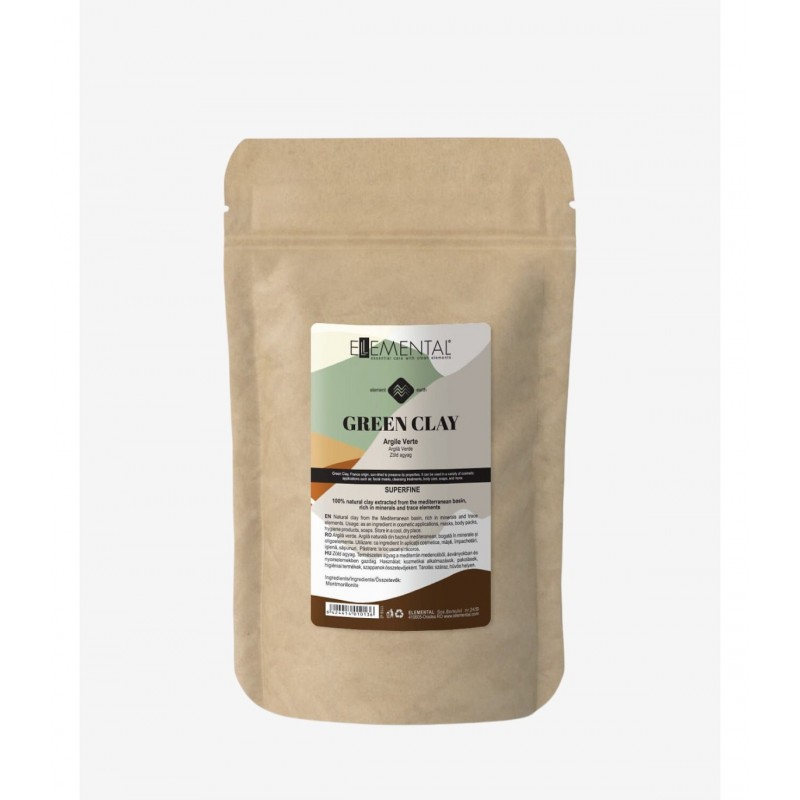





Buy more to get a better price!
When ordering outside Estonia, the amount in the calculation of the discount changes according to the change in VAT.
Green clay is known for its deep-cleansing properties, which help to remove dirt and excess oil from skin pores. Its ability to balance skin oiliness makes it an excellent choice for oily and combination skin types. In addition, the antioxidant properties of green clay help protect the skin from damage caused by free radicals.
The composition of green clay is as follows:
Green Montmorillonite clay is a natural absorbent that helps remove dirt and excess sebum from the skin, thereby helping to cleanse pores and reduce the formation of pimples. Its antibacterial properties help fight bacteria that can cause skin problems like acne. Green clay is also a strong antioxidant that protects the skin from damage by free radicals, thus slowing down the skin aging process.
Montmorillonite is known for its soothing properties because it helps to alleviate skin inflammation and irritation, as well as improve the texture and elasticity of the skin.
Green clay can be used in a variety of cosmetic products, including face masks, cleansers, body scrubs, bath bombs, and various hair care products, where it helps balance scalp sebum production and improve hair health.
In melt-and-pour soap, clay is used in small amounts and its main task is to color the soap. Clay does not dissolve in soap, but mixes with it, so the soap remains slightly speckled.
As the melt-and-pour soap base is liquid, the heavier clay particles sink to the bottom of the mold and the lower part remains more speckled and darker. The color is most intense in transparent soap, but soap becomes opaque due to the clay particles. In the white soap base, the color remains pastel due to the white color of the soap.
In homemade soap, the color remains very natural and subtle, the clay particles distribute more evenly due to the thickness of the soap mixture and do not sink as easily to the bottom. The addition of clay slightly reduces the foam of the soap, so it cannot be overdone. We recommend using 2-3 tablespoons of clay powder per kg of soap. You can find the shea butter clay soap recipe on the Relumee blog.
Data sheet
Specific References